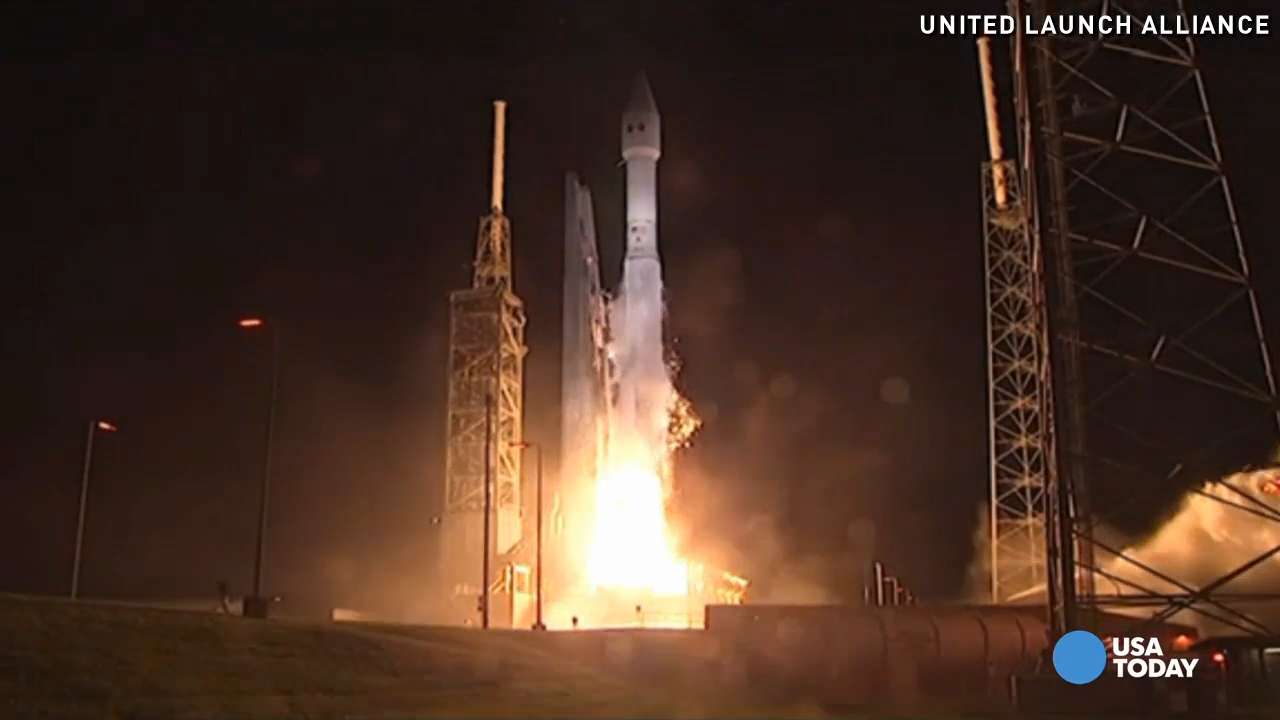Atlas V rocket lifts off with Mexican satellite

CAPE CANAVERAL — United Launch Alliance successfully completed its 100th launch with an Atlas V rocket's delivery of Mexico's Morelos-3 communications satellite to orbit, just under three hours after a 6:28 a.m. ET blastoff from Cape Canaveral Air Force Station on Friday.
The rocket bolted from Launch Complex 41 with 1.6 million pounds of thrust, lighting up a low deck of clouds before shooting through into darkness.
Atop the 20-story rocket was the Morelos-3 satellite, the third of three ordered from Boeing to form Mexico’s $1 billion Mexsat constellation.
The Atlas V launch came less than five months after the second Mexsat satellite, named Centenario, was lost during a failed Proton rocket launch from Kazakhstan.
Friday's launch came after a dramatic hold with less than a minute left in the countdown when a boat strayed into the hazard area.
Instead of at the opening of Friday’s 20-minute window, liftoff came at the end of it.
“It just added excitement to the mission,” said Omar Charfen, the Mexsat program manager, during ULA’s launch Webcast. “It’s a long flight, so we still need to wait until the end.”
The mission is the 57th by an Atlas V since its debut in 2002.
Two more Atlas Vs could launch this month, including a national security satellite targeting a liftoff next Thursday morning from Vandenberg Air Force Base in California. Launch of a Global Positioning System satellite from Cape Canaveral is planned at the end of the month.
United Launch Alliance is a joint venture owned by Boeing and Lockheed Martin, which merged their Atlas and Delta rocket fleets in December 2006.
The Colorado-based company has a near-perfect launch record since then, but is beginning an overhaul to phase out use of the Atlas V’s Russian main engine and lower costs to compete with SpaceX and international competitors in the commercial launch market.
ULA has begun developing the new Vulcan rocket, which it hopes will be ready to fly for the first time in 2019.